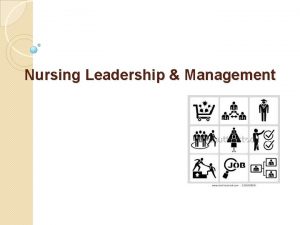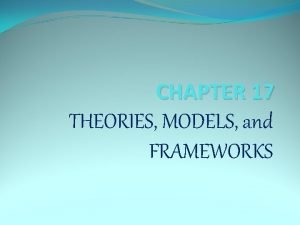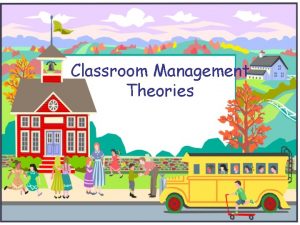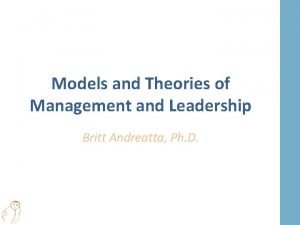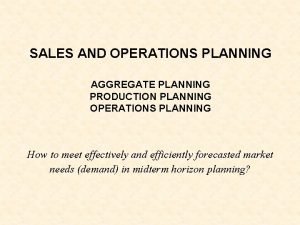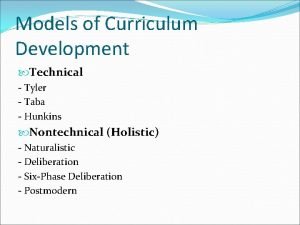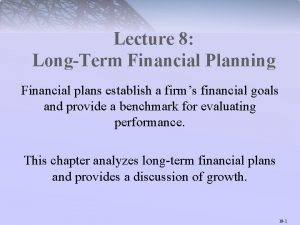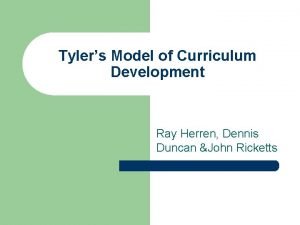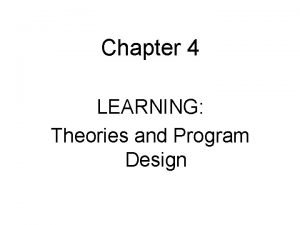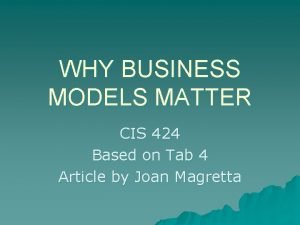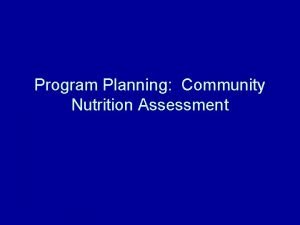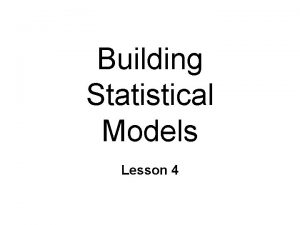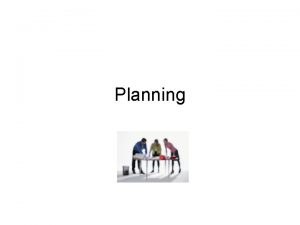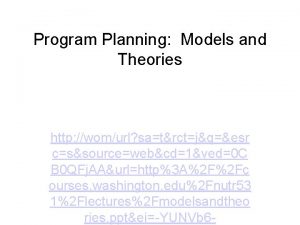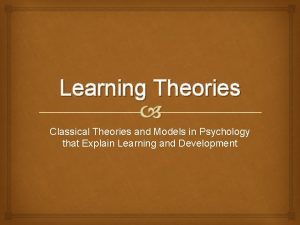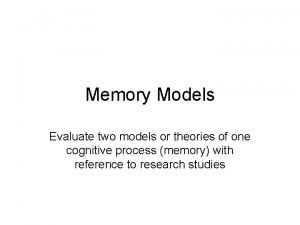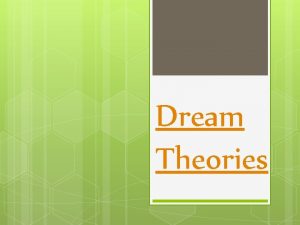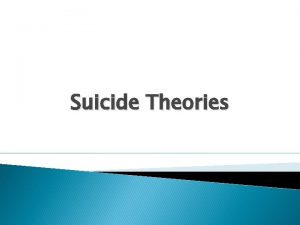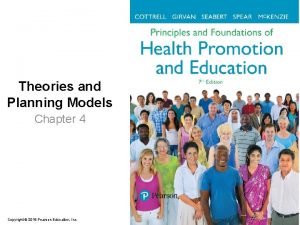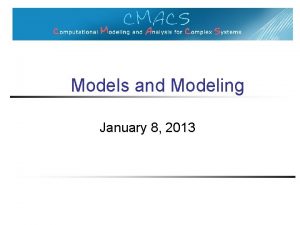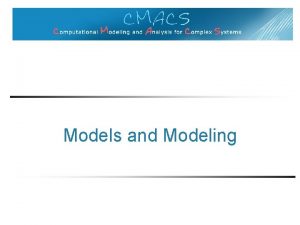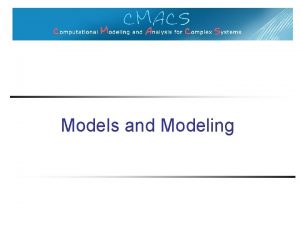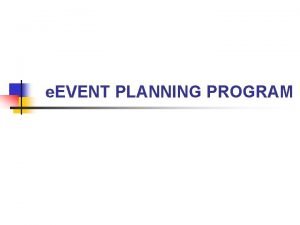Program Planning Models and Theories Why Theories and





























- Slides: 29

Program Planning: Models and Theories


Why Theories and Models? • Builds clarity in understanding targeted health behavior and environmental context. • Directs program planning - why, what and how? • Directs evaluation as integral part

Explanatory Theory = Theory of the Problem (Health Belief Model, the Theory of Planned Behavior, Precaution Adoption Process Model) Change Theory = Theory of Action (Ex: Community Organization, Diffusion of Innovations)

Planning Models

Social Marketing

Definition of Social Marketing • “The application of commercial marketing technologies to the analysis, planning, execution, and evaluation of programs designed to influence voluntary behavior of target audiences in order to improve their personal welfare and that of society. " http: //www. cdc. gov/nccdphp/dnpao/socialmarketing/index. html

Using Social Marketing • mindset used in planning and partnership development, or a structured and strategic planning process • use to influence – behavior of individuals – behavior of policymakers and influential persons for policy and environmental changes. http: //www. cdc. gov/nccdphp/dnpao/socialmarketing/index. html

Key Concepts of Social Marketing • Consumer orientation not expert driven • Concentrates on a defined target group • Must understand what drives current behavior and what “levers” can be used to drive and maintain new behavior

4 “Ps” of Social Marketing • • Product Price Place Promotion

Product • the desired behavior you are asking your audience to do, and the associated benefits, tangible objects, and/or services that support behavior change

Price • the cost (financial, emotional, psychological, or time-related) or barriers the audience faces in making the desired behavior change

Place • where the audience will perform the desired behavior, where they will access the program products and services, or where they are thinking about your issue

Promotion • communication messages, materials, channels, and activities that will effectively reach your audience

PRECEDE-PROCEED (Green and Kreuter) • Systematic planning process • Empowers individuals with – understanding – motivation – skills – active engagement in community affairs

9 phases • 1 -5 are diagnostic • 6 -9 are implementation and evaluation


What is a Theory? • Set of concepts, definitions, and propositions • Systematic view of events or situations • Allows explanation of events or situations

Applying Theories to Health Promotion • Different theories work in different situations • Combinations of theories are often most effective

A Good Fit Theory • Is logical • Is consistent with observations • Is similar to those used successfully in similar situations

Two Main Options • Change people • Change the environment • The most powerful approaches do both


3 Key Concepts at the Individual & Intrapersonal Level 1. Behavior is mediated by cognitions; that is, what people know and think affects how they act. 2. Knowledge is necessary for, but not sufficient to produce, most behavior changes. 3. Perceptions, motivations, skills, and the social environment are key influences on behavior.

Individual Level

Interpersonal Level


Community Level


 Pictures
Pictures Semi modals examples
Semi modals examples Nursing leadership theories and styles
Nursing leadership theories and styles Criticism of von thunen model
Criticism of von thunen model Nursing informatics theories, models and frameworks
Nursing informatics theories, models and frameworks Demographic transition model ap human geography definition
Demographic transition model ap human geography definition Neo skinnerian model
Neo skinnerian model Management models and theories
Management models and theories Don't ask why why why
Don't ask why why why Production planning model
Production planning model Advantage of tyler model
Advantage of tyler model Internal growth rate
Internal growth rate Public health planning models
Public health planning models Tylers model of curriculum
Tylers model of curriculum Learning theories and program design
Learning theories and program design Why business models matter
Why business models matter Why are theories important
Why are theories important Inactivism planning
Inactivism planning Short term planning and long term planning
Short term planning and long term planning What is language planning
What is language planning Strategic planning vs tactical planning
Strategic planning vs tactical planning Planning balance sheet in urban planning
Planning balance sheet in urban planning Scenario planning workforce planning
Scenario planning workforce planning Perencanaan agregat ppt
Perencanaan agregat ppt Aggregate planning is capacity planning for
Aggregate planning is capacity planning for Aggregate planning is capacity planning for
Aggregate planning is capacity planning for Differences between sequential and event-driven programming
Differences between sequential and event-driven programming Strategic planning
Strategic planning Zero-base forecasting
Zero-base forecasting Nutrition program planning
Nutrition program planning


